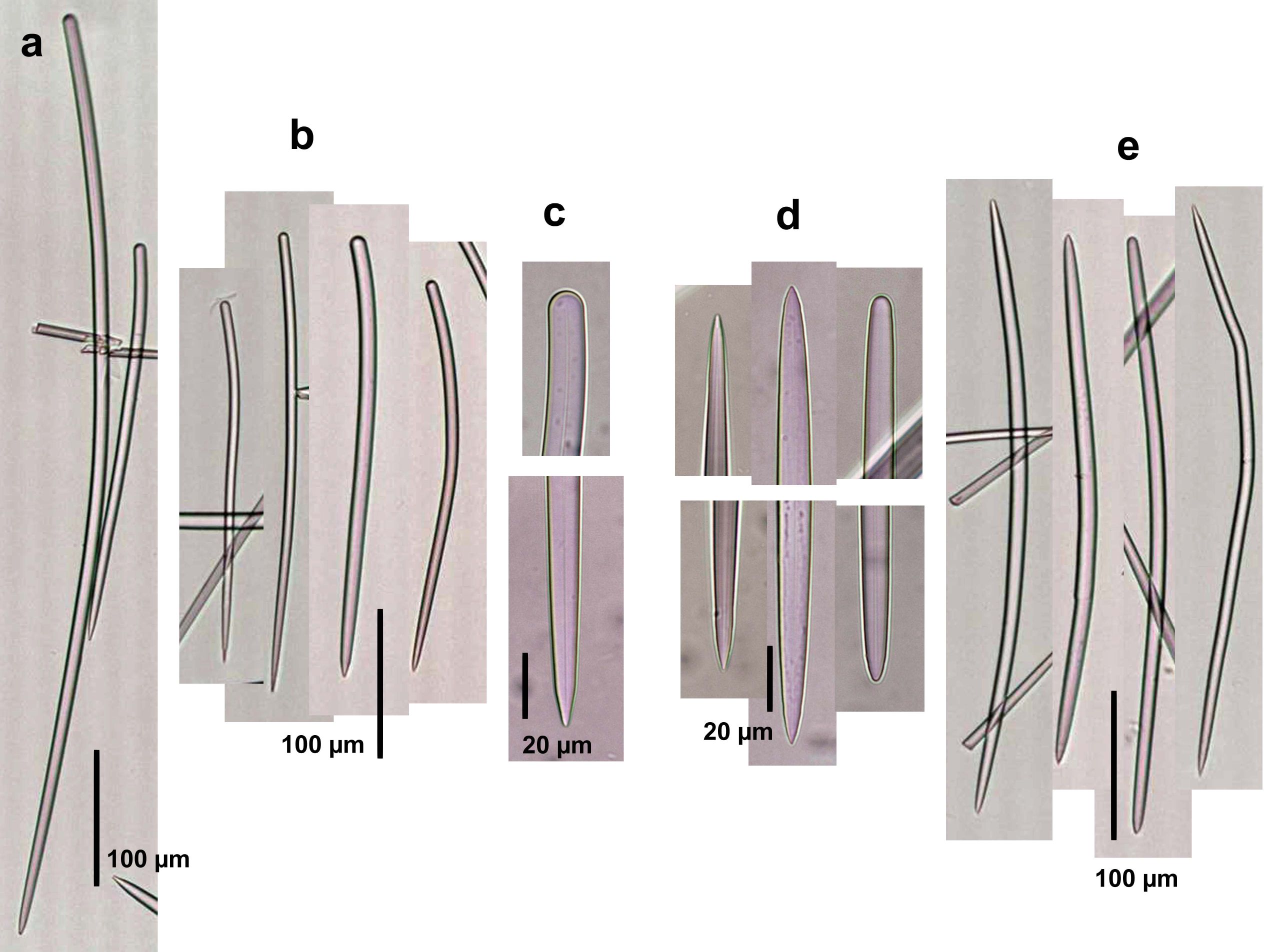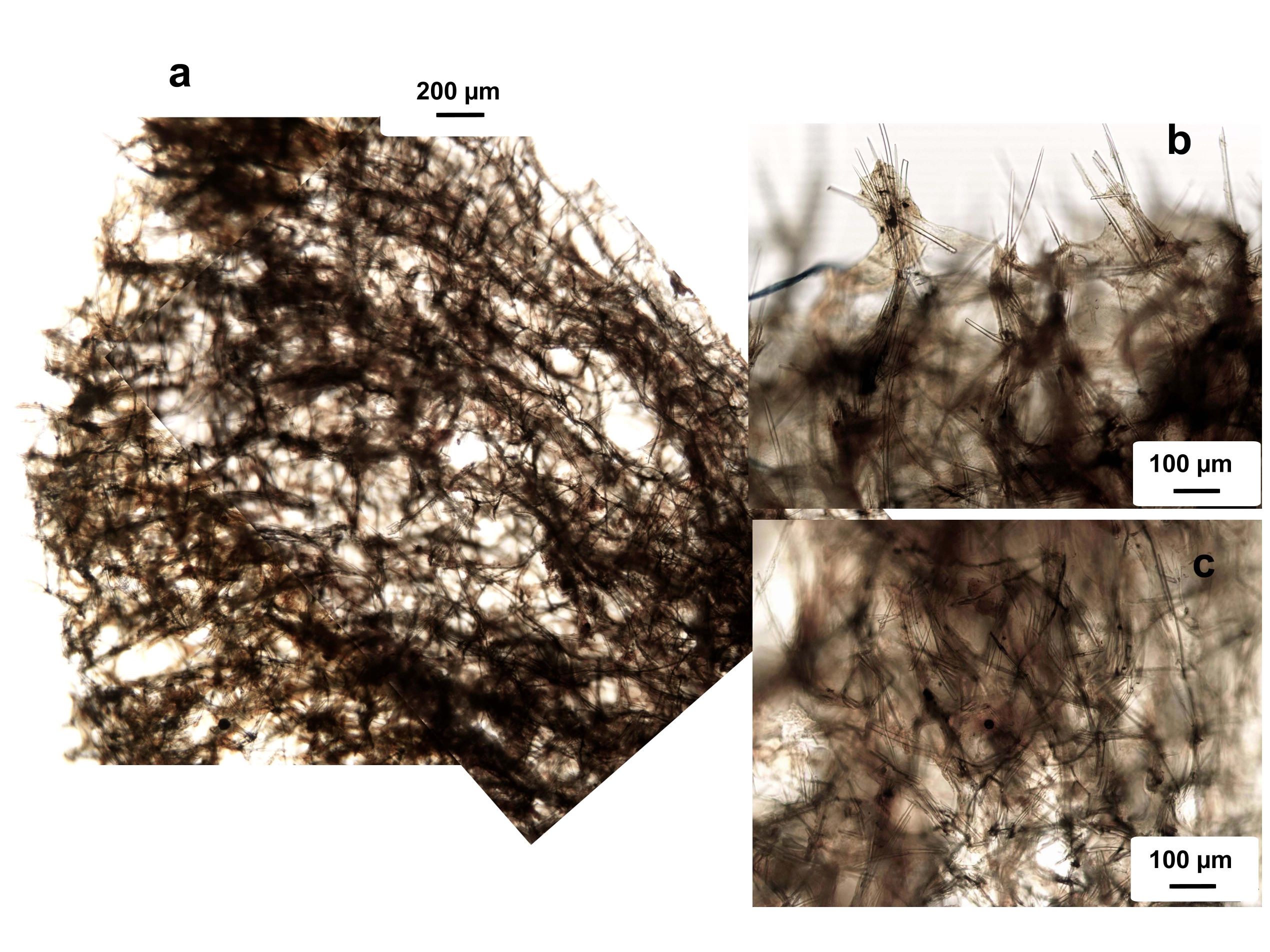the Sponge Guide - www.spongeguide.org
Observed Characteristics:
orange
branching
tough
Bahamas
Species Description and Notes
Description: The only sample is a single branch, somewhat crooked, about 8 cm long and 1.5-2 cm thick, attached to the sides of a reef crevice. The surface is a bit bumpy and irregular, with oscules aligned on one side, up to about 0.5 cm in diameter, with a small transparent collar. Color orange. Consistency compressible, elastic. Skeleton as spicule tracts arising from the center of the branch and ascending and diverging radially towards all surfaces; tracts with 2 to 5 spicules, up to 80 µm thick, embedded in spongin; irregularly interconnected by one to a few spicules, conforming an irregular reticulation with meshes 50-200 µm wide. Ascending tracts are more condensed toward center of the branch. The outer surface is hispidated by the terminal spicules of the ascending tracts. Spicules in two types: (1) curved styles, with the smooth heads and acute but short points, in two size categories, styles I, 260-360 µm long by 5.5-14 µm wide, the most abundant; and styles II, long and slender, but rather scarce, up to 690 µm long and 9.8-15 µm wide. (2) Slightly curved oxea with blunt to acute ends, often asymmetric, 370-470 µm long and 9,5-13.3 µm wide.
Notes: Of the two branching Axinella species described for the Western Atlantic by Alvarez et al., (1998), the present material fits A. pomponiae, by having styles in two categories and oxea of about the same size. The other ramose species, A. polycapella de Laubenfels, 1953, has predominantly oxeas, rarer styles in one size category, and strongyloxea. Having seen only one specimen, we are still hesitant for a definite identification. These and other Axinella species pictured here are noticeably similar in spiculation and skeletal architecture, that we distinguish them basically by external shape and color.
Molecular studies have found that the genus Axinella is polyphyletic, with members spread throughout several families and even orders of Demospongiae (Alvarez et al., 2000; Gazave et al., 2010; Morrow et al., 2012; Redmond et al., 2013). We have decided to maintain the name Axinella for this species until further studies show to which group it belongs.
Author Reference: Alvarez, van Soest & Rützler, 1998
Link: World Porifera Database
Tissue and Spicule Images

Spicule Images: a) Styles II; b) styles I; c) ends of styles I; d) ends of oxea; e) oxea. Sample from the Bahamas.
Source Specimen: http://www.spongeguide.org/ thumbs/00050/01465.JPG

Tissue Images: a) Longitudinal section of a branch (external surface on the left); b) magnification at the surface; c) magnification of the choanosome. Sample from the Bahamas.
Source Specimen: http://www.spongeguide.org/ thumbs/00050/01465.JPG
Images
Axinella ?pomponiae
Location: Bahamas, Goulding Cay, New Providence
Photographer: Sven Zea